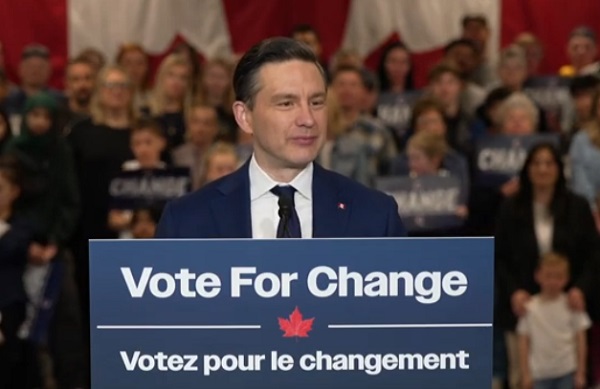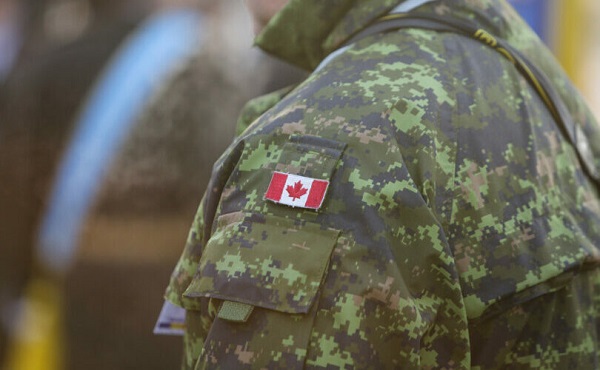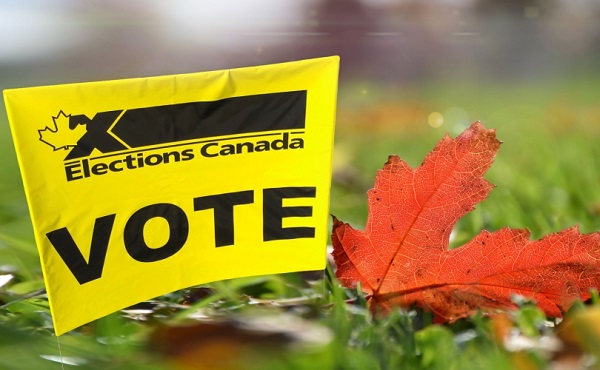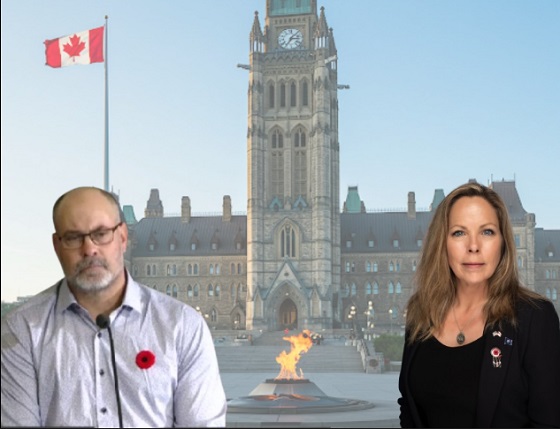Alberta
Masks to be mandatory in Alberta schools – Update on back to school plan

From the Province of Alberta
School health measures now include mandatory masks
As part of a number of new school safety measures to combat COVID-19, mask use for Grade 4 to 12 students, and all school staff, will be mandatory when school returns for the 2020-21 year.
While mandatory mask use is for students in Grades 4 to 12 and all staff, all students and staff in public, separate, Francophone, charter and independent schools will receive two reusable masks from Alberta’s government. More than 1.6 million masks will be distributed to 740,000 students and 90,000 staff. Additional single-use masks will be available at schools, if required.
Mask use will be mandatory for staff and teachers in all settings where physical distancing cannot be maintained. Students will be required to wear them in all shared and common areas such as hallways and on buses. Exemptions will be made for students and staff who are unable to wear a mask due to medical or other needs.
Mask use for kindergarten to Grade 3 students will continue to be optional. Mask use for younger children is a challenge due to difficulties with proper fit and compliance. In addition, evidence shows that children under 10 may be less likely than older children or adults to transmit COVID-19.
“The safety of our staff and students continues to be my number 1 priority. Since cancelling in-person classes in March and developing our school re-entry plan, we have been clear that we would continue to adapt our guidelines as necessary based on current medical advice. These new safety measures will help prevent the spread of COVID-19 in our schools, and we will continue to work with our school authorities to ensure they are equipped for a successful start to the school year.”
“After reviewing the emerging evidence, it is clear that masks can play an important role in limiting the spread of COVID-19. I am not making this updated recommendation lightly, but acting on the best current evidence available. While masks are important, I want to stress that they are only one of the many public health measures in place to limit the spread of COVID-19 and protect the health of students, staff and families.”
“CASS’ board of directors appreciates the government’s commitment to adapting Alberta’s health guidelines as new medical information becomes available and for ensuring school divisions are receiving the protective equipment they need for a successful transition back to school. This announcement clearly demonstrates Alberta Education’s willingness to take the necessary steps to support the safety of staff and students. We appreciate their continued collaboration and support as we approach the beginning of a new school year.”
Alberta’s government remains committed to adjusting the school re-entry guidelines based on current medical advice. The chief medical officer of health has been studying the evidence around masking in schools, and this decision is a direct result of evolving medical advice.
Face shields
School staff will receive one reusable face shield for their use in the schools. Shield use is at the discretion of the individual staff member. Plastic face shields can help reduce exposure but are not equivalent to masks. A mask must still be worn while wearing a face shield.
Hand sanitizer
About 466,000 litres of hand sanitizer will be distributed between all school authorities. The specific volume provided to an individual school authority will be based on student population.
Thermometers
Each school will receive two contactless thermometers to assist with managing student and staff health. Thermometer use will be at the discretion of the school authority.
Staff testing
Alberta Health and Alberta Health Services are working hard to expand testing capacity and reduce turnaround times for testing, including in-school staff, teachers and students, so that anyone with symptoms or close contacts of cases can be rapidly tested and receive test results promptly.
All supplies will be distributed to school authorities by the beginning of the 2020-21 school year. Authorities will then distribute to individual schools, staff and/or students based on the needs of their own communities.
Provincial health guidance for a safe return to school will continue to evolve as necessary to reflect the latest evidence on the nature of the COVID-19 pandemic.
Individual school authorities are developing return-to-school plans that meet the needs of their own communities. These plans are based on direction provided under the provincial school re-entry plan, and supporting health guidance documents.
Alberta’s Recovery Plan is a bold, ambitious long-term strategy to build, diversify, and create tens of thousands of jobs now. By building schools, roads and other core infrastructure we are benefiting our communities. By diversifying our economy and attracting investment with Canada’s most competitive tax environment, we are putting Alberta on a path for a generation of growth. Alberta came together to save lives by flattening the curve and now we must do the same to save livelihoods, grow and thrive.
Quick facts
- Alberta’s government announced students and staff would return to school under scenario 1 – near-normal daily operations with health measures – on July 21.
- School authorities are required to be prepared to move between the three scenarios outlined in the provincial school re-entry plan. Changes to scenarios will be determined by Alberta Education.
Alberta
Low oil prices could have big consequences for Alberta’s finances

From the Fraser Institute
By Tegan Hill
Amid the tariff war, the price of West Texas Intermediate oil—a common benchmark—recently dropped below US$60 per barrel. Given every $1 drop in oil prices is an estimated $750 million hit to provincial revenues, if oil prices remain low for long, there could be big implications for Alberta’s budget.
The Smith government already projects a $5.2 billion budget deficit in 2025/26 with continued deficits over the following two years. This year’s deficit is based on oil prices averaging US$68.00 per barrel. While the budget does include a $4 billion “contingency” for unforeseen events, given the economic and fiscal impact of Trump’s tariffs, it could quickly be eaten up.
Budget deficits come with costs for Albertans, who will already pay a projected $600 each in provincial government debt interest in 2025/26. That’s money that could have gone towards health care and education, or even tax relief.
Unfortunately, this is all part of the resource revenue rollercoaster that’s are all too familiar to Albertans.
Resource revenue (including oil and gas royalties) is inherently volatile. In the last 10 years alone, it has been as high as $25.2 billion in 2022/23 and as low as $2.8 billion in 2015/16. The provincial government typically enjoys budget surpluses—and increases government spending—when oil prices and resource revenue is relatively high, but is thrown into deficits when resource revenues inevitably fall.
Fortunately, the Smith government can mitigate this volatility.
The key is limiting the level of resource revenue included in the budget to a set stable amount. Any resource revenue above that stable amount is automatically saved in a rainy-day fund to be withdrawn to maintain that stable amount in the budget during years of relatively low resource revenue. The logic is simple: save during the good times so you can weather the storm during bad times.
Indeed, if the Smith government had created a rainy-day account in 2023, for example, it could have already built up a sizeable fund to help stabilize the budget when resource revenue declines. While the Smith government has deposited some money in the Heritage Fund in recent years, it has not created a dedicated rainy-day account or introduced a similar mechanism to help stabilize provincial finances.
Limiting the amount of resource revenue in the budget, particularly during times of relatively high resource revenue, also tempers demand for higher spending, which is only fiscally sustainable with permanently high resource revenues. In other words, if the government creates a rainy-day account, spending would become more closely align with stable ongoing levels of revenue.
And it’s not too late. To end the boom-bust cycle and finally help stabilize provincial finances, the Smith government should create a rainy-day account.
Alberta
Governments in Alberta should spur homebuilding amid population explosion

From the Fraser Institute
By Tegan Hill and Austin Thompson
In 2024, construction started on 47,827 housing units—the most since 48,336 units in 2007 when population growth was less than half of what it was in 2024.
Alberta has long been viewed as an oasis in Canada’s overheated housing market—a refuge for Canadians priced out of high-cost centres such as Vancouver and Toronto. But the oasis is starting to dry up. House prices and rents in the province have spiked by about one-third since the start of the pandemic. According to a recent Maru poll, more than 70 per cent of Calgarians and Edmontonians doubt they will ever be able to afford a home in their city. Which raises the question: how much longer can this go on?
Alberta’s housing affordability problem reflects a simple reality—not enough homes have been built to accommodate the province’s growing population. The result? More Albertans competing for the same homes and rental units, pushing prices higher.
Population growth has always been volatile in Alberta, but the recent surge, fuelled by record levels of immigration, is unprecedented. Alberta has set new population growth records every year since 2022, culminating in the largest-ever increase of 186,704 new residents in 2024—nearly 70 per cent more than the largest pre-pandemic increase in 2013.
Homebuilding has increased, but not enough to keep pace with the rise in population. In 2024, construction started on 47,827 housing units—the most since 48,336 units in 2007 when population growth was less than half of what it was in 2024.
Moreover, from 1972 to 2019, Alberta added 2.1 new residents (on average) for every housing unit started compared to 3.9 new residents for every housing unit started in 2024. Put differently, today nearly twice as many new residents are potentially competing for each new home compared to historical norms.
While Alberta attracts more Canadians from other provinces than any other province, federal immigration and residency policies drive Alberta’s population growth. So while the provincial government has little control over its population growth, provincial and municipal governments can affect the pace of homebuilding.
For example, recent provincial amendments to the city charters in Calgary and Edmonton have helped standardize building codes, which should minimize cost and complexity for builders who operate across different jurisdictions. Municipal zoning reforms in Calgary, Edmonton and Red Deer have made it easier to build higher-density housing, and Lethbridge and Medicine Hat may soon follow suit. These changes should make it easier and faster to build homes, helping Alberta maintain some of the least restrictive building rules and quickest approval timelines in Canada.
There is, however, room for improvement. Policymakers at both the provincial and municipal level should streamline rules for building, reduce regulatory uncertainty and development costs, and shorten timelines for permit approvals. Calgary, for instance, imposes fees on developers to fund a wide array of public infrastructure—including roads, sewers, libraries, even buses—while Edmonton currently only imposes fees to fund the construction of new firehalls.
It’s difficult to say how long Alberta’s housing affordability woes will endure, but the situation is unlikely to improve unless homebuilding increases, spurred by government policies that facilitate more development.
-

 2025 Federal Election2 days ago
2025 Federal Election2 days agoAs PM Poilievre would cancel summer holidays for MP’s so Ottawa can finally get back to work
-

 armed forces1 day ago
armed forces1 day agoYet another struggling soldier says Veteran Affairs Canada offered him euthanasia
-

 Opinion14 hours ago
Opinion14 hours agoCanadians Must Turn Out in Historic Numbers—Following Taiwan’s Example to Defeat PRC Election Interference
-

 International22 hours ago
International22 hours agoHistory in the making? Trump, Zelensky hold meeting about Ukraine war in Vatican ahead of Francis’ funeral
-

 C2C Journal17 hours ago
C2C Journal17 hours ago“Freedom of Expression Should Win Every Time”: In Conversation with Freedom Convoy Trial Lawyer Lawrence Greenspon
-

 Business21 hours ago
Business21 hours agoIt Took Trump To Get Canada Serious About Free Trade With Itself
-

 conflict1 day ago
conflict1 day agoWhy are the globalists so opposed to Trump’s efforts to make peace in Ukraine?
-

 2025 Federal Election1 day ago
2025 Federal Election1 day agoCarney’s budget is worse than Trudeau’s





